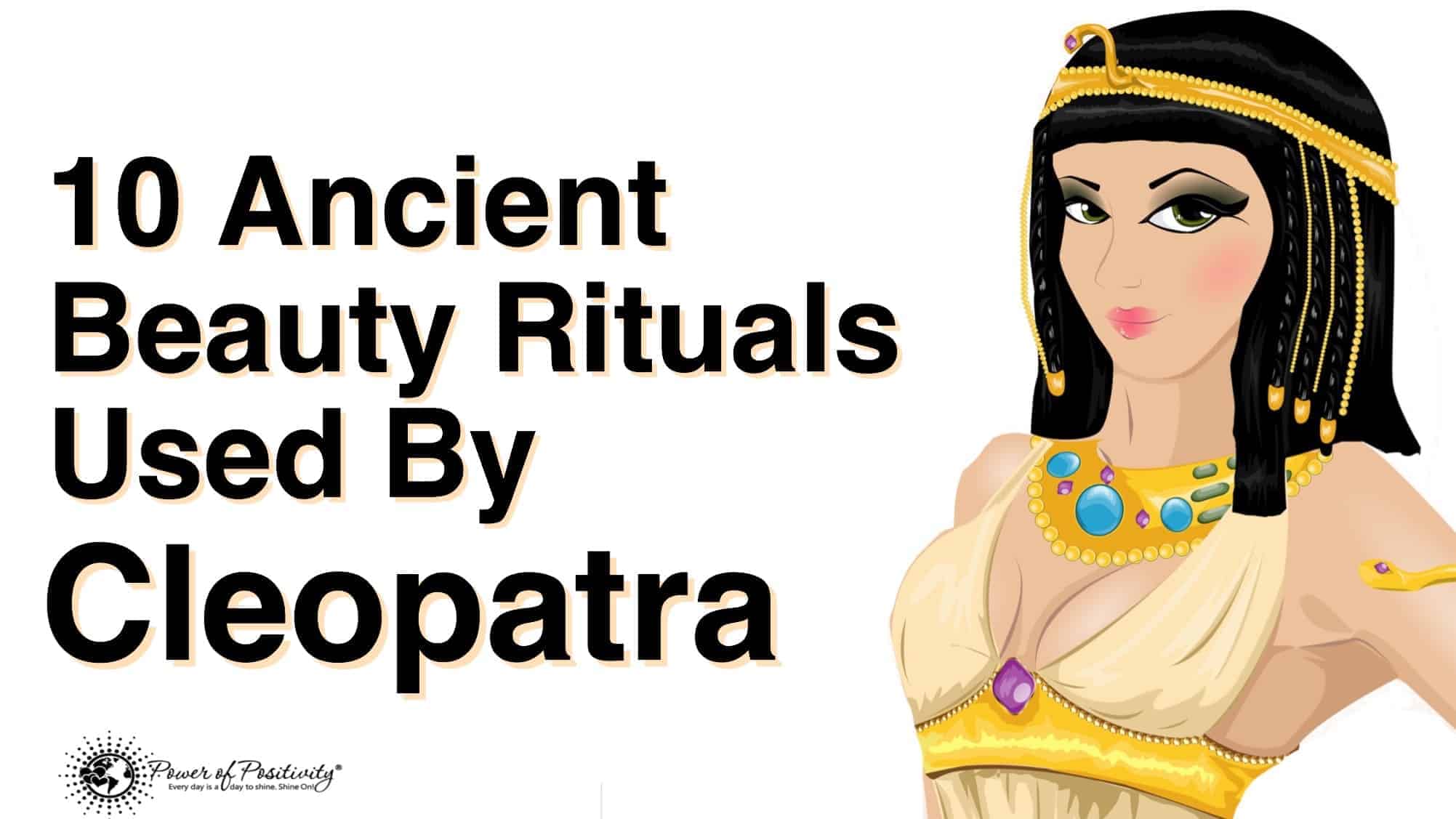The legendary beauty of Cleopatra is so renowned that her natural beauty rituals are sought after by women who want to look just as attractive and desirable as she was. We know that Cleopatra was able to seduce two powerful Roman leaders, Julius Ceasar and Mark Antony, and others wrote of her beauty as well.
As we turn to more natural sources of health and beauty products, looking back at history to recreate the products used by beautiful women is one way for us to incorporate organic Earth wisdom into our daily lives. According to heritagedaily.com, Roman historian Cassius Dio described Cleopatra as ”a woman of surpassing beauty’ who was ‘brilliant to look upon.”
Dio also writes of Cleopatra that she ‘had an irresistible charm, and her presence, combined with the persuasiveness of her discourse and the character which was somehow diffused about her behavior towards others, had something stimulating about it.’
Here are 10 ancient beauty rituals that we have collected for you and which were likely used by Cleopatra in her Egyptian palace.
10 Ancient Beauty Rituals Used By Cleopatra
1. Milk bath
Hippocrates wrote that Cleopatra used the milk of 700 donkeys to bathe in. Milk contains lactic acid, which is useful as a mild exfoliant. Not having 700 female donkeys around like Cleopatra did, we can recreate this ancient beauty ritual by adding a half-gallon of whole goat milk to a typical bath.
Increase your Cleopatra-like bath quality by adding some fragrant essential oils like jasmine and sandalwood. You can also add some raw, unrefined honey to dissolve in your bathwater. Add up to 1 cup of honey per bath and you should not feel sticky afterwards.
2. Salt scrub
A sea salt scrub down is a great way to invigorate the skin and remove dead skin cells. Cleopatra would have had access to salt mined form caves, as well as that from the sea. Find a good quality, fine grain salt and add some drops of your favorite essential oil. Wet your skin in the shower, then scrub and rinse to recreate this ancient beauty ritual.
3. Royal jelly
The royal jelly collected from bees is an incredibly nourishing ingredient to add to your beauty routine. Nutritional Physician Dr. Cass Ingram says that royal jelly has an ‘immense nutritional and biochemical profile, it aids in the natural regenerative processes by supplying precisely what the body needs. Thus, it helps the cells heal themselves.’
Look for beauty creams containing royal jelly to benefit from this ancient beauty ritual. Royal jelly can help reduce the appearance of dark circles under the eyes, reduce the appearance of dry skin and help reduce the severity of wrinkles.
4. Rose water
Rose water is a delicate astringent that can be sprayed on the face after cleaning, like a toner. You can make rose water by boiling one cup of rose petals to two cups of water and cooling the mixture. You can also purchase rose water from organic product companies like Inflora Botanica.
5. Clay mask
Bentonite clay is a popular cosmetic and health ingredient as we return to ancient beauty treatments. According to BurtsBees.com, ‘clay has skin-softening properties and helps exfoliate dead skin cells and draw out impurities from the skin.’
6. Hemp seed oil
Another ancient beauty treatment would have been the use of hemp seed oil as a moisturizer. BurtsBees.com says that hemp seed oil is excellent for skin due to the ‘high content of proteins and essential fatty acids. The fatty acids in hemp closely resemble our own skin’s lipids, so they are readily absorbed into the skin. The oil is said to help slow skin’s aging and provide a healthy moisture balance. Additionally, it offers relief to acne, minor abrasions, psoriasis and eczema.’
7. Aloe leaf juice
There is evidence that Cleopatra contributed to a book of medical remedies and one of her recipes was for alopecia or hair loss. Recipes.hypotheses.org says that Cleopatra suggested that those suffering from baldness shave daily and rub the bald area with a linen cloth, and then anoint the area with a mixture of reed canary grass, (arundinis) an ounce of potassium nitrate (spuma nitri or saltpeter) and a solution of picis liquida (tar water).
Rather than trying to recreate Cleopatra’s hair growth recipe, look for products containing aloe juice. Aloe vera is a centuries-old hair and scalp beauty treatment. Aloe juice is also a good source of fatty acids.
8. Unrefined Shea butter
Cleopatra would have access to raw, unrefined African shea butter. Shea butter and other moisturizing ingredients would have been important for her in the desert climate of Egypt.
9. Tallow soap
Tallow is an animal product, and if you are against the use of animal products, try an olive oil, hemp oil or alternatively vegan soap. Organic, hormone-free, grass-fed beef tallow soap has skin-nourishing ingredients such as Vitamin B12, Omega 3’s and CLA (a potent antioxidant) that Cleopatra would have loved as a part of her beauty routine.
10. Beeswax
Beeswax still goes into many cosmetics today from lotion to lip balm to mascara. The skin smoothing, hydrating, moisture-locking power of beeswax is an excellent ancient beauty ingredient that you can add to your own homemade cosmetics. Even those who have allergies to bees or to pollen have few allergic reactions to beeswax.












 Community
Community

